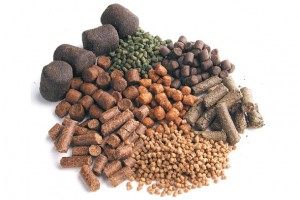There are many purposes of pellet mills and their end products. One of the most popular purposes is the one that is known also as pellet presses or pellet mills for feed mills – as these have been designed specifically to produce pellet that will be used to feed animals like poultry and fish. In the case of pellet mill fish feed, the power source for the pellet mills vary in sizes – which can go as high as 450 kilowatt. Meanwhile, the production volume also varies in numbers, as it ranges from 80 kilograms per hour all the way to 7 tons.

To make sure that the end result is not too big; the feedstock can be easily compressed so that it will be efficient and dense. This is done by creating small holes in the die so that the feedstock can be run through them. The die holes should be round in shape and the pellets should be pushed inside out by the pellet rollers. Doing so will ensure that the pellets will be formed as a rod, which will then be cut to its proper size by a knife. The knife is usually located at the side of the die. To improve the production even more, it is common for pellet mill fish feed to have conditioning units that are placed just right above the mills. The added liquids will help bring more firmness to the pellets.
Once the pellets are produced in the plant, they will be transferred to a cooler or drying facility. In this place, all heat that was generated from the production process will be efficiently removed. The facility will also reduce the moisture content – making the pellets much more durable for the purpose of shipping and storage. Normally, the pellets will be stored in bins or silos – especially for bulk shipping that require further packaging process.
In the case of pellet mill fish feed or any other types of pet foods, it is highly important to keep the production consistent. All pellets should be similar in size, nutritional value, as well as their moisture content.


